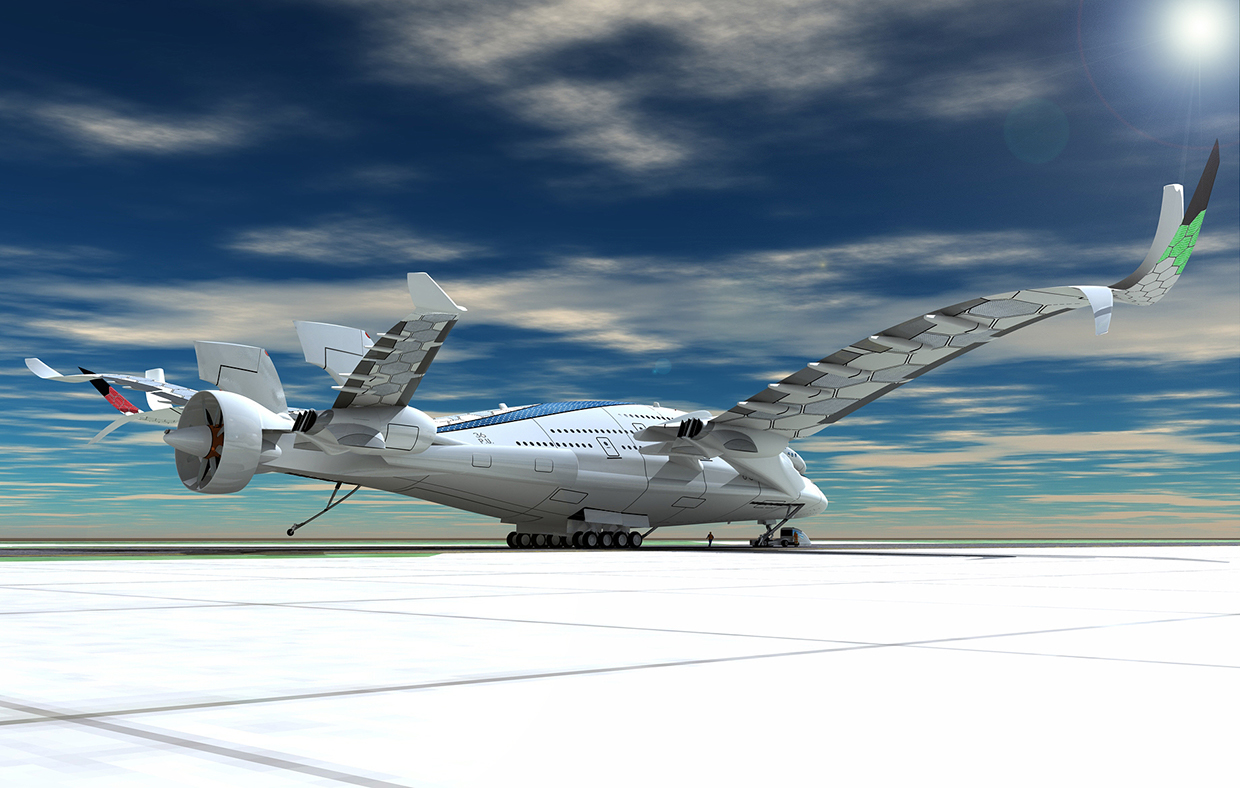“Progress Eagle” is based in the technology beyond 2030 with ideas from Quantum Mechanics, if we consider the evolution of current technology and future progress in uses of theoretical physics solutions. Today we can find these technologies in the most advanced laboratories around the world (Universities, Private companies, Government installations,...) and in the theories of the best Scientifics. For these reasons, the innovations that the “Progress Eagle” presents could be available in fifteen years’ time. The most relevant aspects about this “Super Jet” would have a closer relation with Quantum Mechanics, we can simplify the airplane concept like a “Mega” energy’s particle with special specifications more orthodox than we can found in today’s physics.
Self-sufficient
in energy in a very large value, with zero contaminant emissions and at
the same time an advanced tool to “clear” the atmosphere capturing non
wishes particles that altered the good balance of our ecosystem, like
the excess of CO2. With innovative shapes and sizes (tested with CFD
software in order to know its feasibility), three passenger’s decks and a
special cockpit located on the second floor with panoramic views that
allow the pilots to have a direct reference’s views up to 70% of the
airplane. Equipped with Smart & Self –repairing skin’s wings,
composed by carbon nanotube & carbon fibers, meta-materials in
hexagonal pattern on the surface and a hollow exoskeleton in an
ultra-lightweight beehive-shaped of titanium and graphene; using the
graphene material like a micro-super capacitors (fast electrical storage
that can charge and discharge a hundred to a thousand times faster than
standard batteries) and as a reinforce of inside’s wing structure.
Triple
Winglets, an evolution of the double winglets that some airliners are
using now, with the current blended winglet on top side and the ventral
strake. The winglets of the “Progress Eagle” could be composed with two
winglets on top (between conventional blended and elliptical winglet),
everyone with a different angle and orientation and one ventral;
reducing substantially the drag and increasing the sustentation (more
lift with less thrust), following tests carried out by computational
fluid dynamics software (CFD). The geometry of the wings is similar to
a double arrow structure, and the section that joins the central
fuselage’s part with the wings, has a special design to redirect the
“front” air flow and profit it to generate electrical energy with a
Nano-Kinetic System (Nanowires), and to “feed” the rear Wind Generator,
the CO2 system cleaner and the Hydrogen system generator



No comments:
Post a Comment